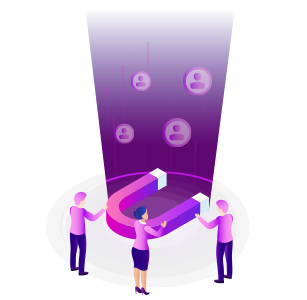If you want more customers in your business, you need to develop a strong customer acquisition plan.
A good plan starts and ends with understanding which stages customers are going through as they become aware of your business and (ultimately) become brand advocates for you.
Between each of those goals — from new customer to brand advocate — specific things need to happen.
In this guide, we’re going to break down what those are, how you can attract more customers by knowing what they are and how you can set your business up for long-term growth.
As you’re mapping out your customer acquisition plan, spend time breaking down each of the customer acquisition stages and how you’ll move people from one stage to the next.
This will help you determine where you should focus your effort, whether that’s on getting the word out about your brand, turning leads into customers, or turning customers into raving fans.
But first…
What are Customer Acquisition Stages?
When it comes to acquiring customers for your business, there’s 6 main stages they’ll go through.
Depending on the stage they’re in, you’ll need to adjust your approach to accommodate them and move them into the next stage.
Your customer acquisition plan should include everything from lead generation, to lead nurture, and then finally into converting your leads into new sales and then brand advocates.
To help you understand your potential customers at each stage, you’ll need to understand the stage, itself, and what needs to happen to move them forward to the next stage.
Stage #1: Awareness
In the awareness stage, potential customers become aware of your brand or product.
This stage is all about getting visibility and is often achieved through advertising, social media, content marketing, events, and other PR efforts.
Your primary focus at this stage is to capture as much attention as possible.
Stage #2: Interest
In the interest stage, potential customers have become aware of your brand or product and begin showing interest in seeking more information.
They might visit your website, follow your social media accounts, or subscribe to your newsletter.
Once a potential customer has shown interest, your marketing will need to shift as your potential customer’s interest level shifts.
Stage #3: Consideration
Then, inside the consideration stage, interested prospects have begun considering whether or not they want to purchase your offer.
They will begin to evaluate your offer, product, or service against their own needs and what your competitors are currently offering.
They might read reviews, compare prices, or even test out the product, if possible.
Stage #4: Purchase
This stage includes the act of buying your product or service and includes the transaction process.
You want to ensure that the process is as smooth and straightforward as possible to help lower your cart abandonment numbers.
Then, you can put processes in place to recapture people who may have abandoned their carts.
Stage #5: Retention
After they’ve made a purchase, your focus should shift to retaining them for future sales.
This can involve follow-up communications, customer support, loyalty programs, and efforts to ensure they’re satisfied with the purchase they’ve made.
Stage #6: Advocacy
When a customer is satisfied with their purchase and your product, they can become advocates for your brand, recommending your products or services to others and often providing valuable feedback.
This stage can significantly enhance customer acquisition through social proof and word-of-mouth.
Once you understand each of the stages a customer will go through on their way to becoming your biggest brand advocates, you can start back at the beginning by focusing on raising their awareness.
How to Raise Awareness for Your Product?
Before you can convert people into new customers and brand advocates, you’ll need to make sure they know who you are, what you do, and what problems you solve for them.
In this stage, they’re seeking answers to their questions.
If you provide the most relevant answer, you have a chance to get discovered.
That means you’ll want to focus on speaking to their pain points and connecting your brand story to the values they currently hold.
When you get that right, it’s easy to put your brand in front of people in the awareness stage.
To do that, here are a few strategies you can implement right now.
Create top-of-the-funnel content
Top of funnel content, or TOFU, if you’ve never heard the term before, refers to the earliest stage in your customer’s journey.
They’re at the widest part — or the top — of your marketing funnel.
People in this stage are looking for solutions to problems they’re experiencing.
For instance, if you wanted to build a webinar funnel and searched Google for “building a webinar funnel”, you would land on this blog:

Then, when you click the link in the search results page, you’ll be taken to this blog post:
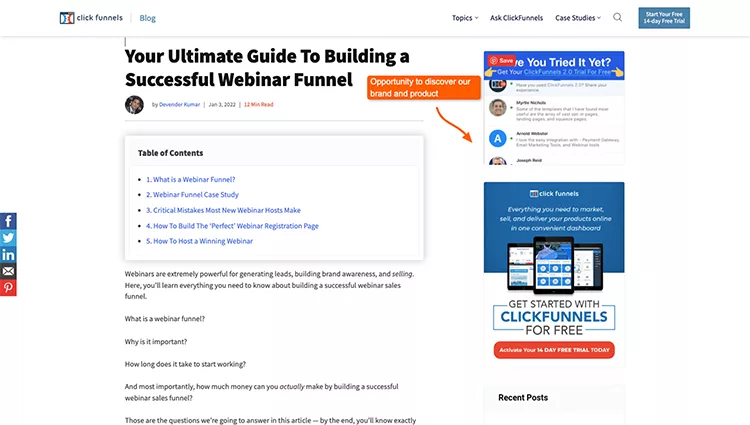
You would also be given an opportunity to discover our product which you may not have been aware of until you read through the blog post.
Then, you’ll see that ClickFunnels is the authority on funnels, especially webinar funnels.
Apart from just establishing authority, you can also leverage storytelling inside of your content to cultivate an emotional connection with your audience.
Humans are naturally drawn to stories and emotionally engaged customers are more likely to remember a brand and make purchasing decisions based on this connection.
If you aren’t already creating top of funnel content for your audience, you can use ClickFunnels.
You can customize your blog post by adding images, buttons, links, videos, etc.
Creating content that introduces your product or brand to your prospects is the easiest way to bring them into your funnel and give yourself the opportunity to nurture them into customers.
If you haven’t already tried ClickFunnels, click here now to start your free 14-day trial.
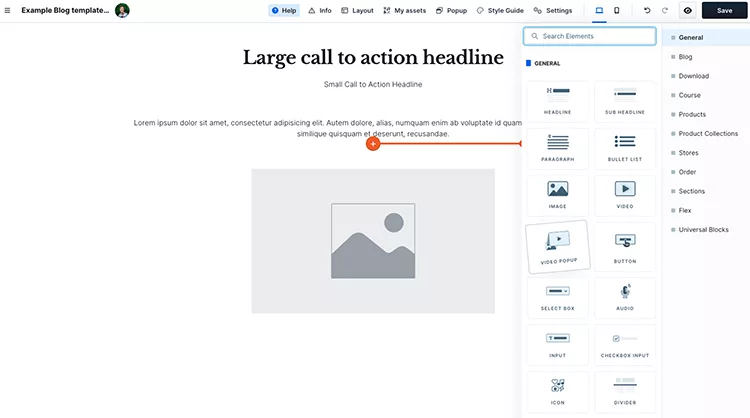
Here’s another example of great top of funnel content from Uber Eats.
They create humorous, storytelling videos that keep people interested in watching.
Then, as they watch, they begin to discover problems that the brand can help them solve.
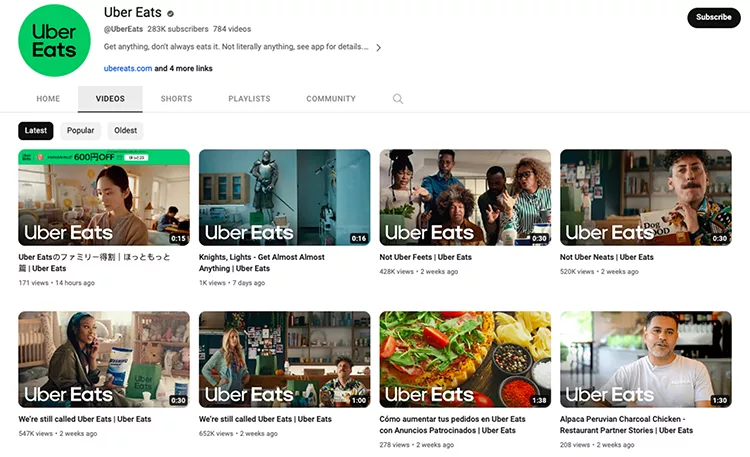
By consistently providing content that aids in relaxation and mental wellness, Calm reinforces its brand association with these concepts.
The content they create helps strengthen their positioning within the wellness market.
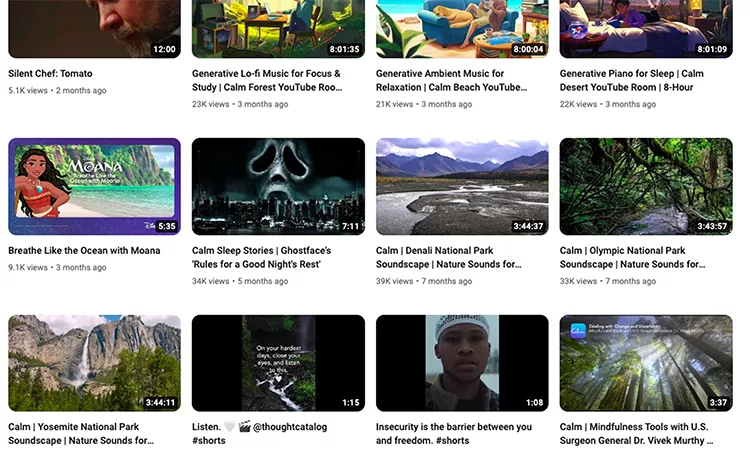
Engage in PR Activities
Another great way to raise awareness and positively influence your brand is through PR.
Media publications typically have millions of readers so using your public relations skills to get in front of them and secure a spot in their publication can help you make major headway with people in the first stage of your customer acquisition plan.
For example, Olipop perfectly executed this strategy.
You can find their content on thousands of different online PR websites.
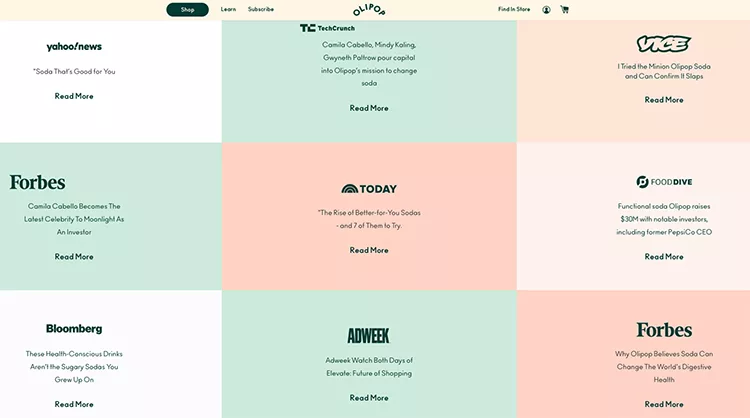
They feature their press mentions prominently on their website.
Then, you can see what one of these pieces actually looks like below:
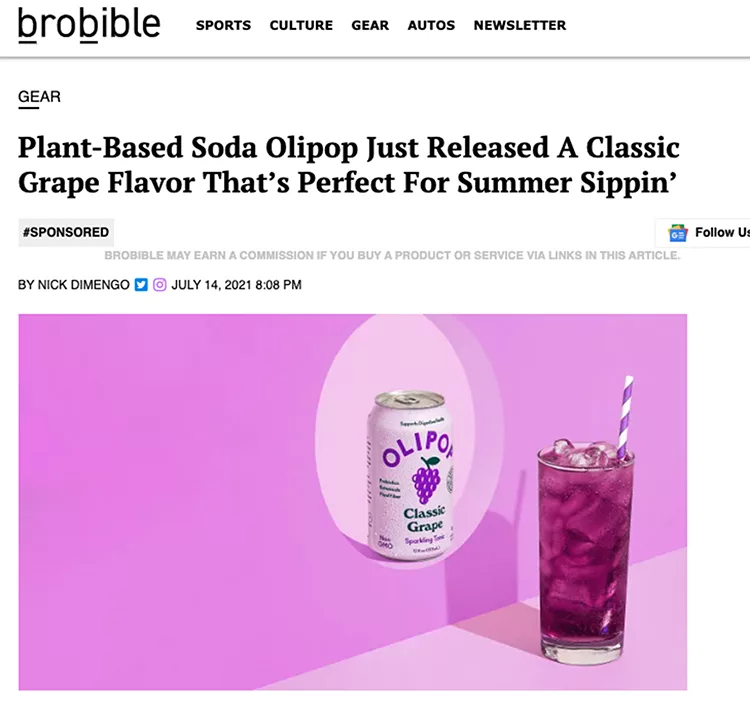
Here’s another example from their PR strategy:
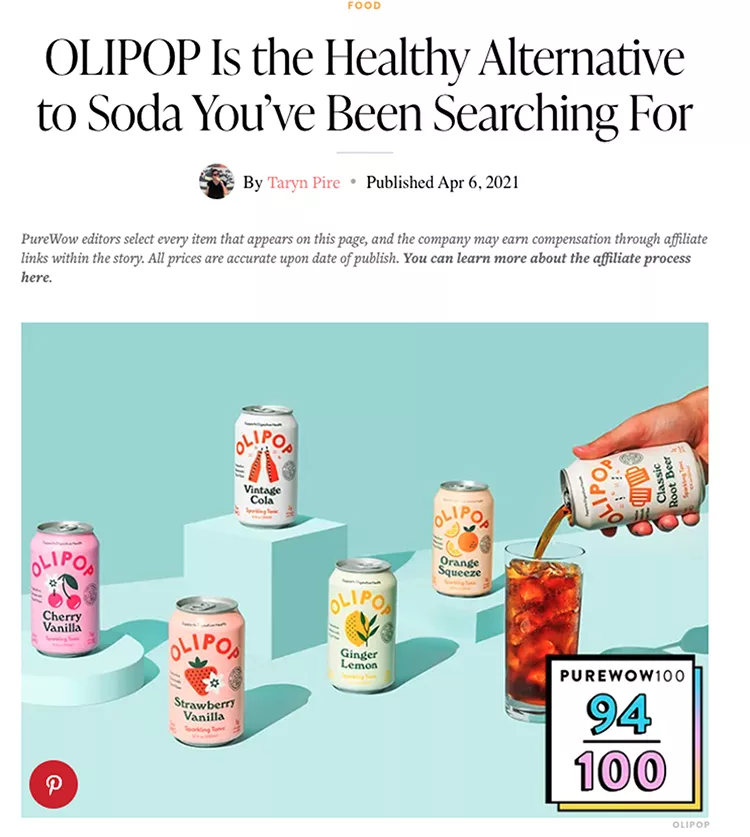
And again on Beverage, a publication with millions of readers:
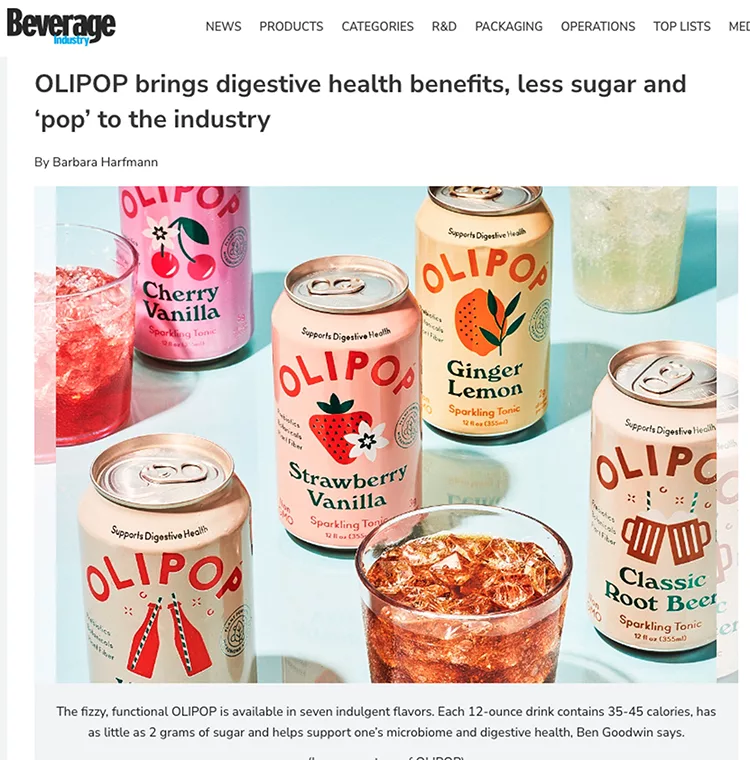
To start tapping into this strategy, you can use a free service like HARO.
HARO stands for “Help A Reporter Out” and it’s a service that connects journalists seeking expertise with people who can provide that expertise.
It’s a great tool for gaining media exposure without a massive investment.
As a small brand, you can register as a HARO source and set your preferences to receive queries related to your industry or area of expertise.
Then, you’ll receive emails from journalists three times a day.
You’ll want to monitor these queries closely, looking for opportunities that align with your brand.
Whenever you find a relevant query, you can respond with a concise, informative pitch.
Make sure you include your credentials, why you’re a good fit for the story, and any unique insights you can offer.
This is what a typically HARO email will look like:

Run Facebook Ads With Lead Magnets
For potential customers in the awareness stage, you don’t want to directly advertise your products.
Instead, when you advertise, you want to run lead magnets to give you a chance to get them into your email list so you can nurture them into becoming customers.
Free materials like masterclasses, webinars, eBooks, and guides work great.
To give you an example, check out this ad:
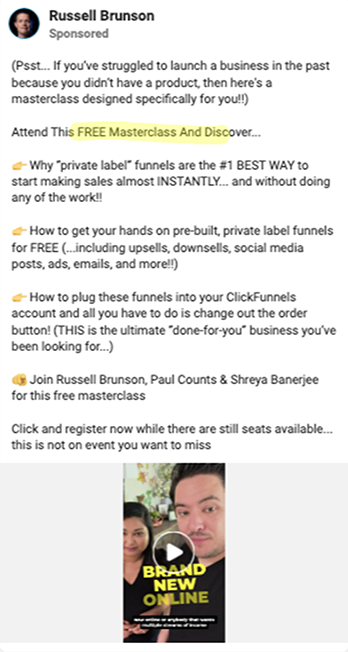
This ad from Russell reaches out to the right target audience — people who want to launch their online businesses.
Instead of trying to sell a product it offers something for free.
This encourages the chances people will become a lead compared to if he was attempting to sell ClickFunnels directly from the ad.
You can use ClickFunnels to create and edit your landing pages where people will go after they click your ad, letting them download your lead magnet:
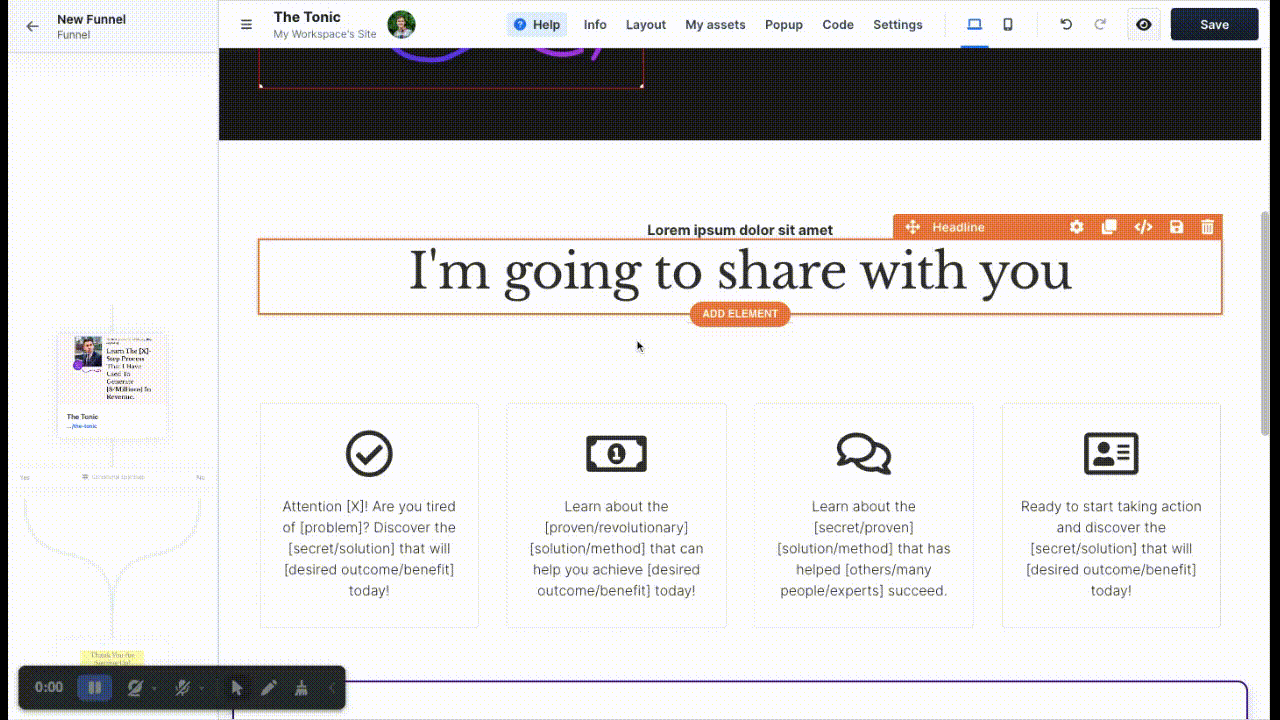
If you’re not already using ClickFunnels, click here to give it a free test run now.
Sponsor Newsletters, Podcasts, or Blogs
Right now, there are hungry audiences waiting for brands like yours to solve their problems.
These audiences are already congregating on newsletters, podcasts, and blogs, too.
If you sponsor those newsletters, or appear on those podcasts, or have your content featured on those blogs, you can open up entirely new audiences to your products.
Take a look at this example:
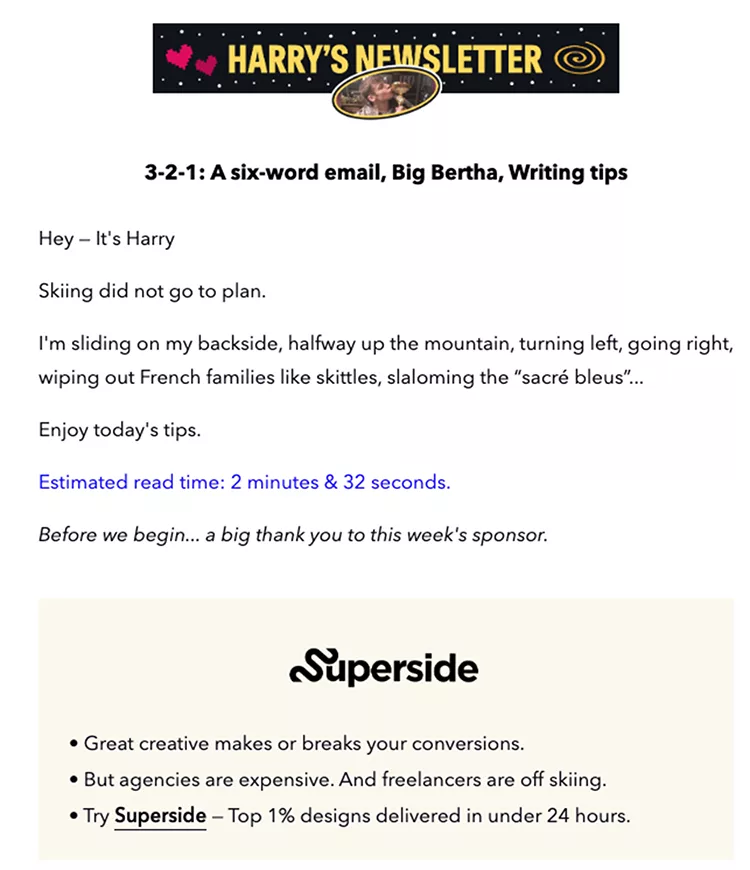
You can see the sponsored ad from Superside in the email.
Here’s another example from the Tim Ferriss podcast:
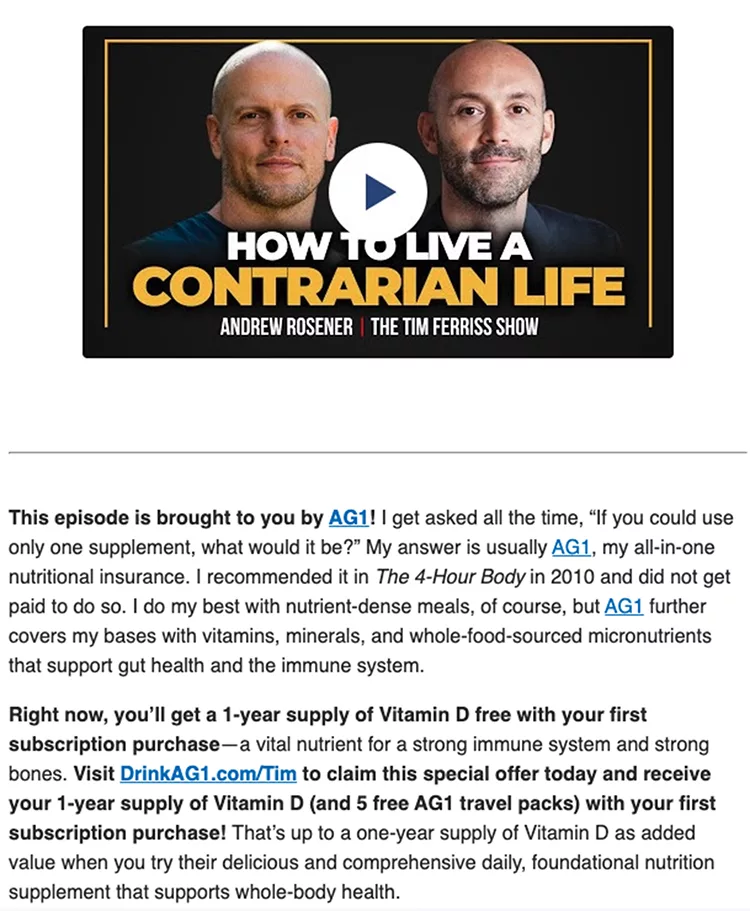
While these sponsorship placements are a form of paid advertising, what you’ll spend on them ranges from incredibly affordable to incredibly outrageous.
Before you start sponsoring content on newsletters, podcasts, or blogs, you’ll want to understand your marketing budget and metrics to ensure you don’t overspend and get minimal results.
How to Generate Interest in Your Product?
Once you’ve raised awareness, you need to start getting people interested in your brand.
At this point, people will want to subscribe to your email list or download resources to learn more about you and the problems you solve.
You’ll want to provide these touch points for them to engage with.
If you just give them information without being able to stay engaged with them, chances are high you will lose them and they’ll move on, forgetting about your brand.
There are a few strategies you can use to drum up interest once you’ve captured their attention.
Create a Signup Process & Send Automated Email Campaigns
Letting people sign up for your newsletter or request to receive updates (or some other incentive) is a great way to engage with people.
Since they’re now aware of your brand, you have an opportunity to immediately capture people who have high intent — meaning they are more ready to buy right now than other potential customers.
For example, check out this landing page from Ramit Sethi:
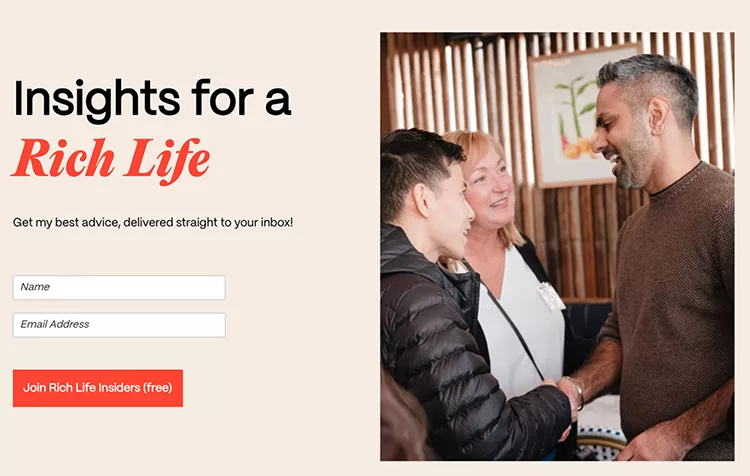
Here’s another example from the boxed wine brand, Juliet:
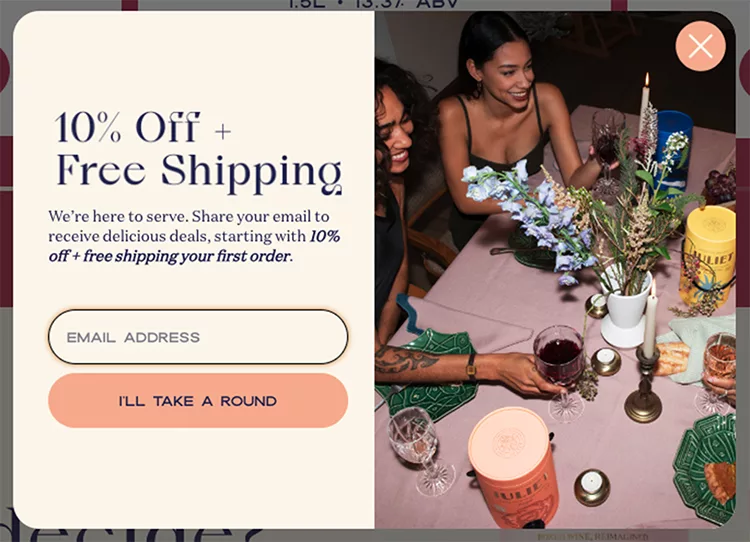
Each of these examples are incentivized to help entice more people to become subscribers.
Then, after subscribing, you can engage with your new subscribers via automated emails.
Take a look at this email from Ramit Sethi:
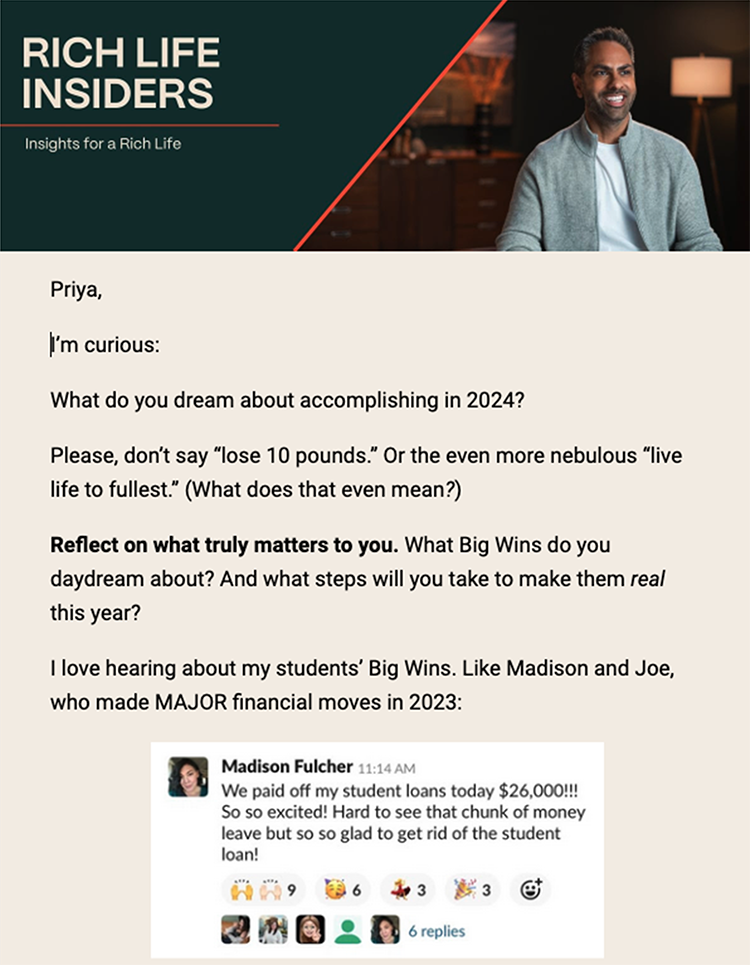
Here’s another great automated email from the app Ten Percent:
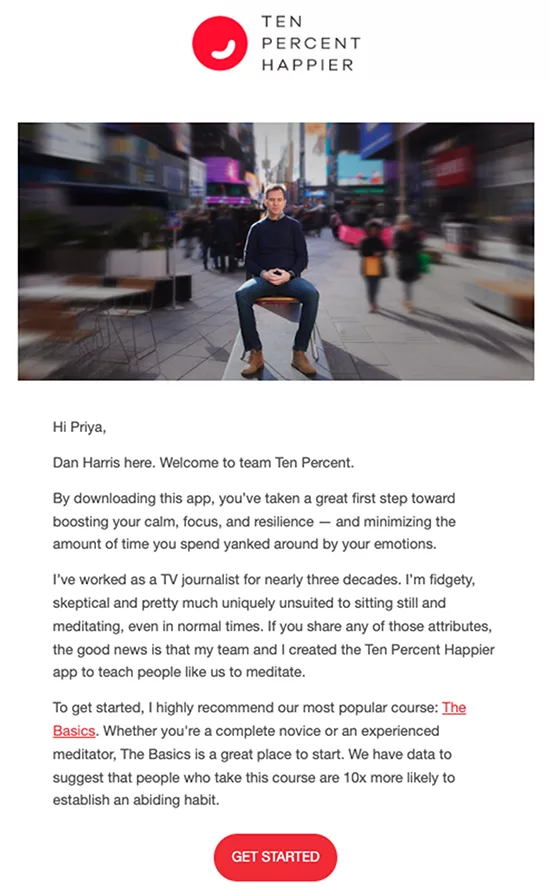
It’s not yet attempting to pitch a product or service.
Instead, it’s building interest in their brand and their products.
Remember, at this stage, your goal is to cultivate a relationship with your subscribers and move them through your customer acquisition plan.
While some people in this stage may be ready to buy right now, the majority of people are going to want to learn more about you.
Take the opportunity to connect with them and nurture that relationship instead of immediately trying to sell them something.
That opportunity will come later.
Invite to Events & Workshops
When you want to help people learn more about you, events and workshops are some of the best ways to do it.
These give your audience a chance to meet in person or virtually while you have their captured attention, making it easier for you to ascend them through your acquisition plan.
One brand that’s great at this is Ahrefs.
They recently emailed their list, inviting people to their in-person conference in Singapore.
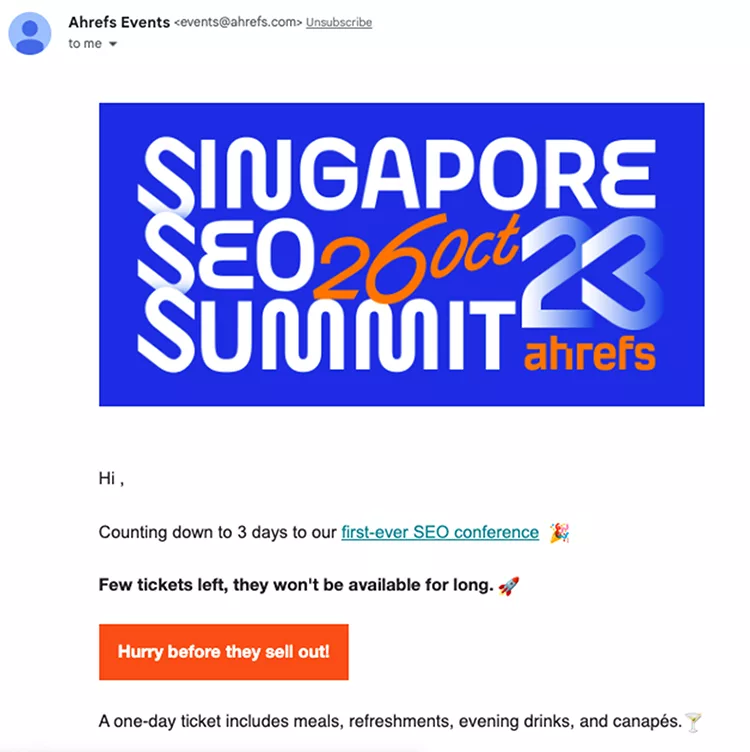
If you’re hosting events or workshops, or attending them, make sure people know you’ll be there.
Then, invite them for an opportunity to connect with your brand on a deeper level.
Use Live Chat on Your Website
With potential customers in the awareness stage, they’re going to have questions.
To move them from the awareness stage to the interest stage, being able to actively answer those questions can help you quickly make the transition.
A live chat function directly on your website is a great way to answer their questions.
There are two ways to do this, too.
You can either put someone on your team in charge of answering questions that come through the live chat or use AI chatbot tools to provide answers to the most common questions people will have.
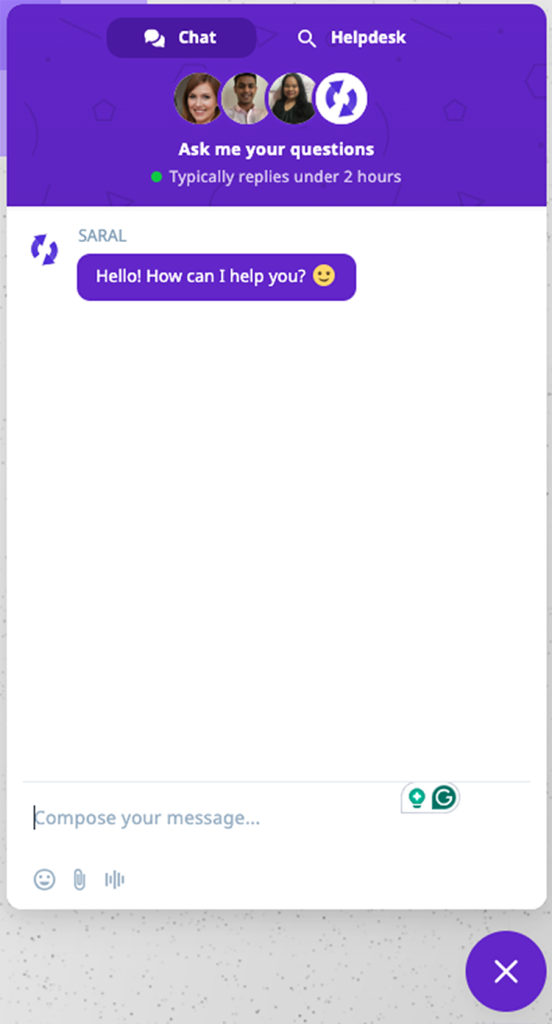
How to Move Potential Customers to the Consideration Stage
Once you’ve raised awareness and generated interest in your brand and products, the next step is to move people into the consideration stage.
In this stage, your potential customers have already identified their problem but are weighing the various pros and cons of various different solutions.
This is when you’ll want to introduce middle of funnel (or MOFU) content.
Potential customers still aren’t quite ready to make a purchase yet.
They’ll want to learn more about why they should choose you — or why they should choose you over your competition.
This is where content like videos, blogs, emails, social media posts, and others can do the heavy lifting for you.
In this stage, with your content, you want to focus on nurturing your leads and educating them.
If you aren’t nurturing them, your leads can quickly lose interest in your brand and move on to one of your competitors.
The content you produce here is what turns leads into great leads — which is what your sales team is looking for.
To turn new leads into great leads, there’s a couple strategies you can use.
Show Comparison With Other Products
Since prospects are going to be thinking about whether your offer is better than an offer from one of your competitors, you can compare yourself side-by-side with them.
Check out how Ahrefs does it:

That comparison is featured directly on their website.
Podia is another great example of making comparisons while nurturing leads.
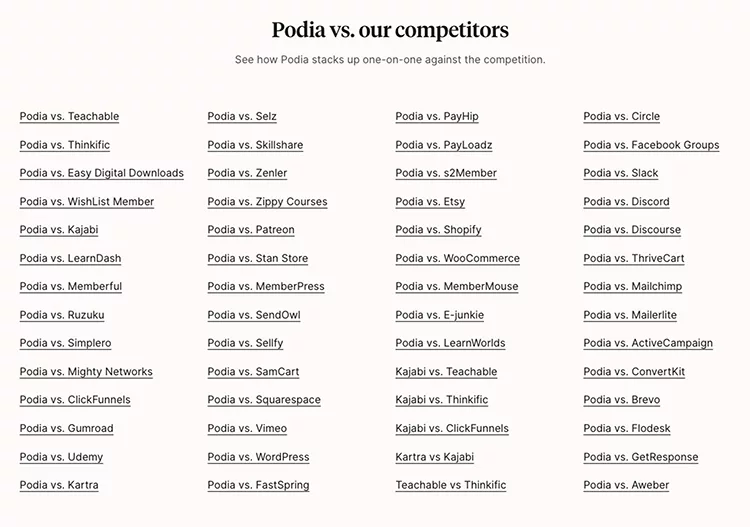
In this example, Podia has listed out every single competitor and then created content around where Podia excels and where its competition may excel.
In these reviews and comparisons, transparency is critical.
If a competitor is better in a certain area than you, make it known.
The last thing you want happening is over-selling someone by making yourself look better than one of your competitors in an area that you’ve actually fallen short.
Instead of over-selling yourself, if a competitor is doing better in a specific area, you can focus your efforts on improving in that area.
Or, if you’ve decided that you don’t want to compete in that area or on that feature, you can downplay the importance of it and show how you excel in other areas.
Then, you can put the comparison content you’ve created inside blog posts or on your sales pages.
DTC brands typically include the comparisons directly on their landing pages:
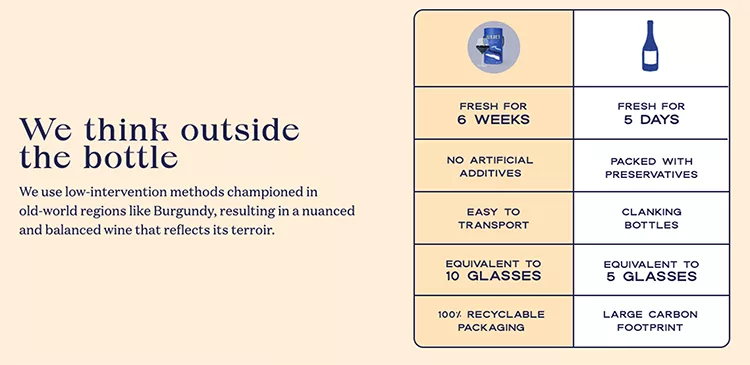
Remember, the key here is to provide transparent, accurate comparisons.
Since people will be in the consideration stage, they will place any comparisons you make under increased scrutiny due to your own bias.
It’s perfectly normal to place your product in a better light than your competitor’s products.
What you don’t want to do, though, is over-hype or oversell your own offers, especially if your prospects have already performed deep research on your competitors.
Offer free trials or samples
Another great way to move people into the consideration stage is to simply offer free trials or samples.
This is a risk-free way for your potential customers to experience your offer and people are more likely to try something new if it doesn’t cost them anything.
Offering a free version or trial can help differentiate you from your competitors who aren’t currently offering the same option.
As an example, check out this free trial offer from Notion:
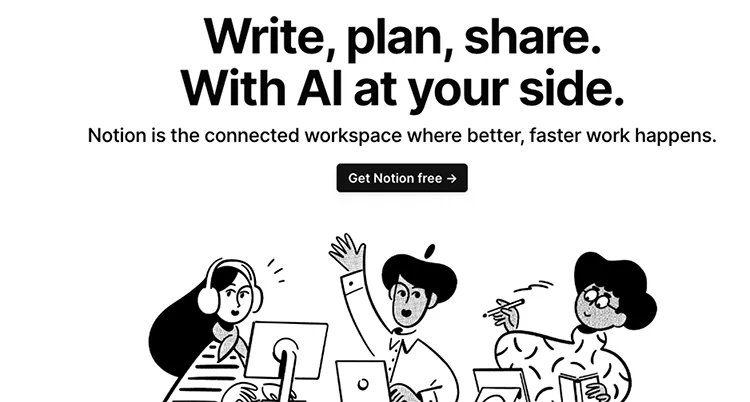
DTC brands also make great use of free trials.
Hanz De Fuko, the men’s styling brand, will include a sample of something new that they’ve recently launched or something they know you’ve never tried before.
The sample is often enough to experience the product and then decide to commit to making a full purchase of it with their next purchase — or for their first purchase.
You can see an example of their approach below:
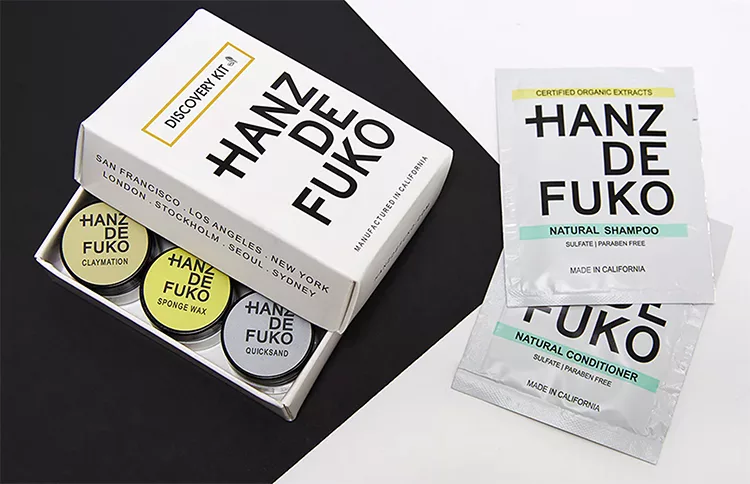
Stitch Fix also uses free trials flawlessly.
When people subscribe to try on clothes, they’re given the option to only pay for the clothes that they decide to keep.
This way, customers can see how great the brand is before they fully commit.
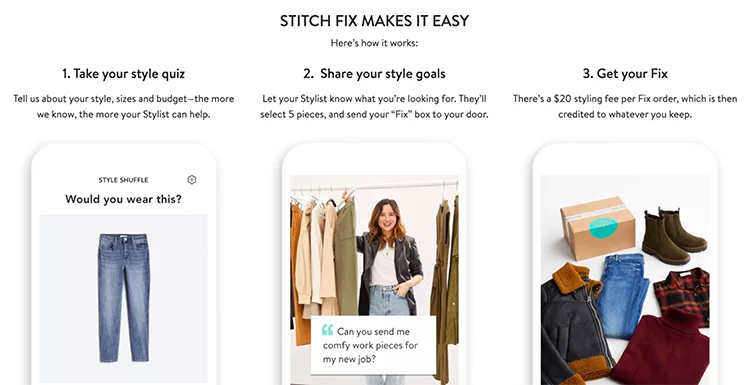
Since buying clothes online can be so difficult, using this free trial (or try-on) model is a great way to get people out of the interest stage and into the consideration stage.
How to Nudge People to Make a Purchase?
The next stage in your customer acquisition plan is moving people from the consideration stage to actually making a purchase.
While many people will naturally purchase as soon as they’ve decided they want to work with your brand or access your products, many people will not.
There’s still a chance to lose these potential customers to your competition.
The reasons they’ve decided to wait on buying could be anything from objections that have gone unanswered, having additional questions, or simply because life is busy and they haven’t had a chance.
For these people, they may bookmark your products or services and fully intend to come back but then get caught up in life’s day-to-day and simply forget.
To avoid losing these prospects to one of your competitors, there are strategies you can use to gently nudge them to make a purchase.
Implement a Follow-Up Strategy
An automated followup sequence is one of THE easiest ways to stay top of mind with these prospects and give yourself an opportunity to convert them into a new customer.
You want to make sure these emails are timely, though.
To make your followup strategy as effective as possible, you can use 3 separate sequences.
One for people who subscribe to your email list and want to learn more about your brand and products.
A second sequence for people who have placed products into their shopping cart but then abandoned the cart for whatever reason.
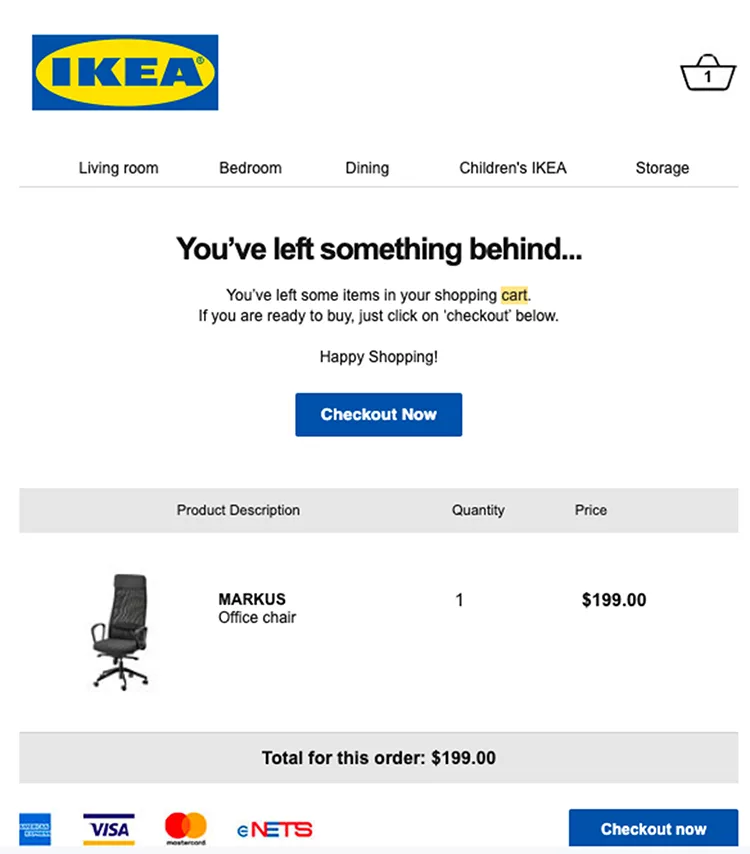
Finally, a third sequence for people who may have accepted a free trial or when their free trial may be coming to an end.
Monday.com executes this strategy flawlessly.
They use a followup email sequence to stay in touch with potential customers as their free trial is nearing its end — gently nudging them to become full-paying customers.

In this stage, the sequence should be focused on showing people the problems you can help them solve, new creative ways to use the product (or software, in this case).
If you’re selling services, these emails can be more personalized.
They can be sent whenever someone is thinking about your offer as a solution to their problems but doesn’t necessarily make a payment to get started.
Take a look how Sleek does it:
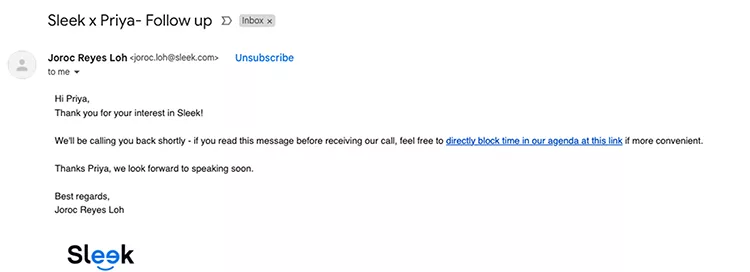
The key with your sequences is to think about the different reasons people may not buy.
You can address their concerns and handle their objections with the sequence you use to help show them why your product or service is the solution they’re looking for.
Use Retargeting Ads
You can also use retargeting ads to follow potential customers around the internet.
Retargeting ads are great for helping show potential customers why they should choose your offer.
Here’s an example of a great ad from J. Crew:
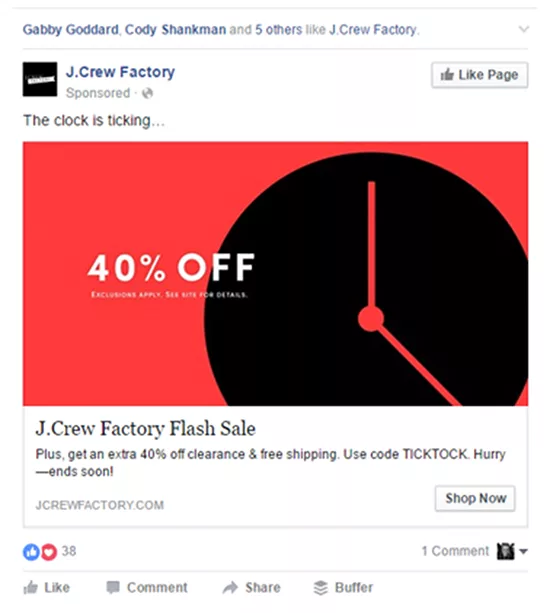
Similar to your followup sequences, you want your retargeting ads to focus on specific messages.
You want to spend some time thinking about the different reasons people aren’t buying.
Whether that’s an objection they have, a question they may still have, or because they aren’t quite sure how the product can solve their problems, using retargeting ads to put this information in front of them is a low-cost way to convert more people into new customers.
Share Case Studies and Testimonials
One of the best types of content to include in your followup sequences and retargeting ads is case studies and testimonials from previous customers.
Marie Forleo LOVES using testimonials and case studies in her emails.
Here’s an example of one of them from her recent B-School launch:

At ClickFunnels, we also use our blog to show exactly how powerful our software is and how a wide range of businesses are using it to fuel their growth.
You can check it out here.
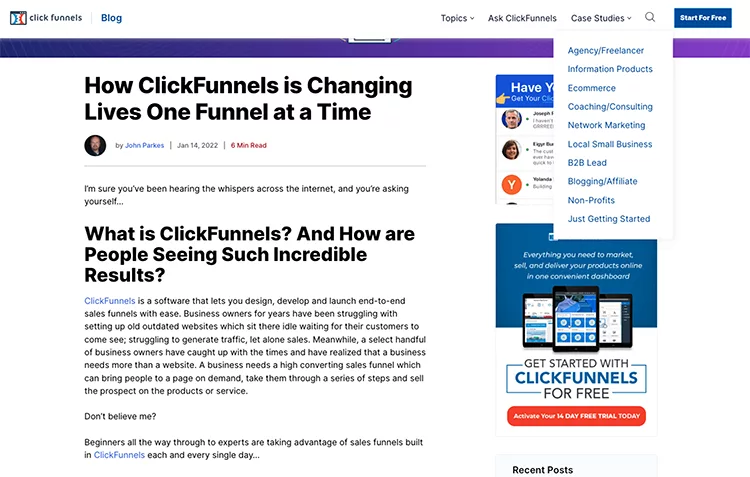
On your own website, you can create sections that solidify social proof you’ve collected.
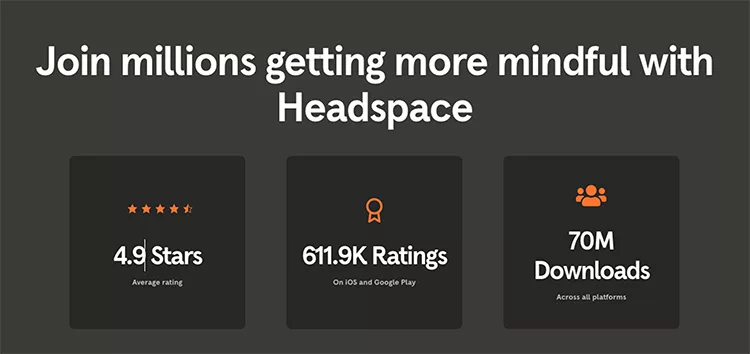
This social proof is HUGE for showing your potential customers that other people like them are having a great experience with your product or service.
Offer Flexible Payment Options
You can also offer flexible payment options for people who may be on the fence and want a lower barrier to entry.
A large payment can sometimes be a reason that people won’t make a purchase now.
Offering them flexible payment options gives them a lower-cost way to experience your offer or service.
Ramit Sethi uses this strategy to help drive increased sales:
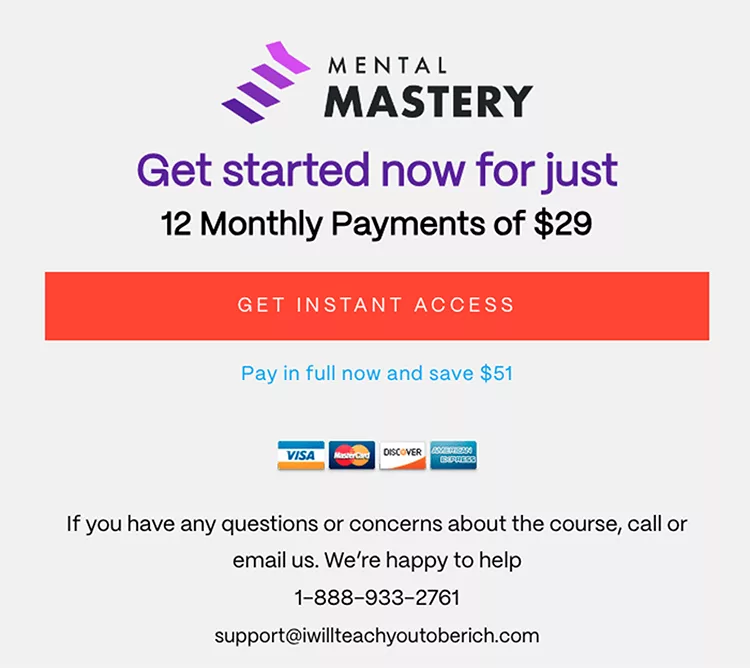
They have multiple different options.
The most popular is their smaller payment plan of $29 per month for 12 months.
If people want to purchase an entire year’s subscription, they can save even more money.
For DTC brands, there are ways to offer flexible payment plans, too.
Check out how Altitude Sports does it:
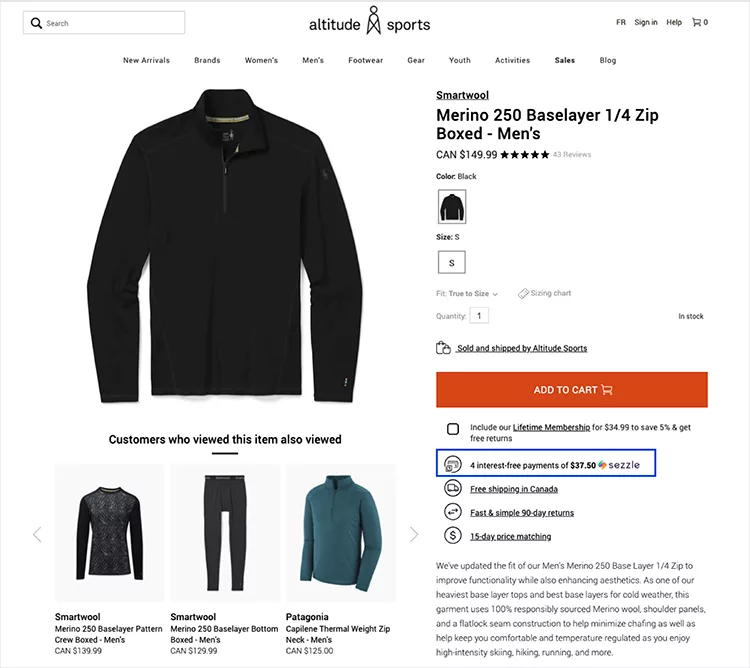
How to Retain Your Customers
Now, once you’ve converted a new lead into a customer, your customer acquisition plan should shift into retaining them as customers and giving yourself an opportunity to convert them into advocates.
Acquiring a new customer is MUCH more expensive than retaining the ones you already have.
By shifting your focus to retention, your marketing efforts will be a lot more cost-effective.
These customers also provide you with a consistent feedback loop that helps you improve your products and your marketing — so you reach more customers and new market segments.
Retaining your customers also generates a higher CLTV, or customer lifetime value.
That means the initial cost of acquisition is spread out over more transactions, improving the return on investment for each new customer acquired.
To shift into retention, there’s a handful of strategies you can use.
Send a Discount After Their First Purchase
One of the easiest ways to do this is by offering a discount after customers make their first purchase.
This encourages repeat purchases.
With discounts, customers feel valued and appreciated, making them more likely to return to your brand in the future.
Instacart offers discounts on new customer’s next 2 orders:
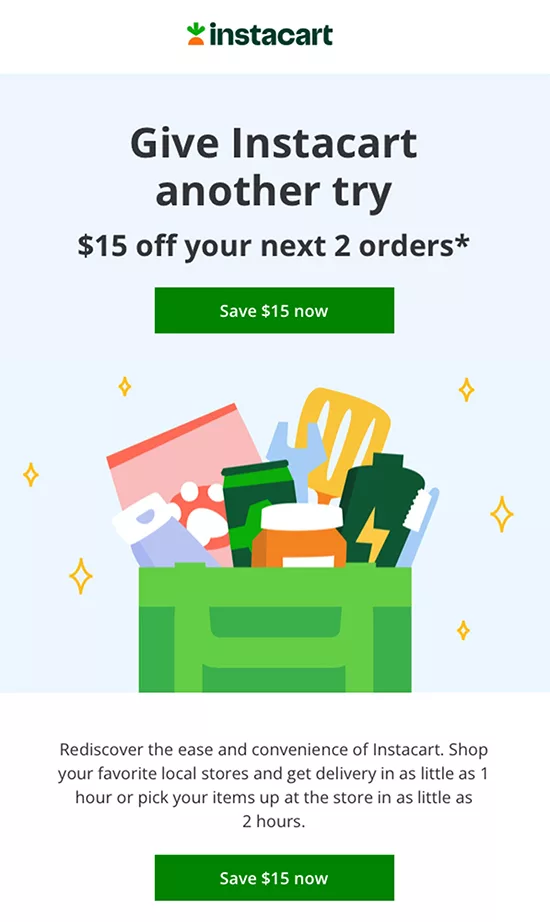
This type of offer can be automated, too.
Using a tool like ClickFunnels, after someone becomes a customer, you can tag them with “customer” and then insert them into a new automation.
That automation can focus your messaging around retaining them and encouraging them to make purchases of other products or services while offering a discount at the same time.
If you haven’t already tried ClickFunnels, click here to start your free 14-day trial now.
Offer Subscription Services
Offering subscriptions is another way to increase your revenue-per-customer and retain customers for a longer period of time.
Subscriptions help remove the burden of making repeat purchases, offering a seamless and convenient experience for your customers.
They also make growing your business incredibly predictable.
Subscription models help ensure that customers regularly receive products or services which helps keep your brand top-of-mind and lets you integrate into their daily lives.
Olipop uses subscriptions to retain its customers:
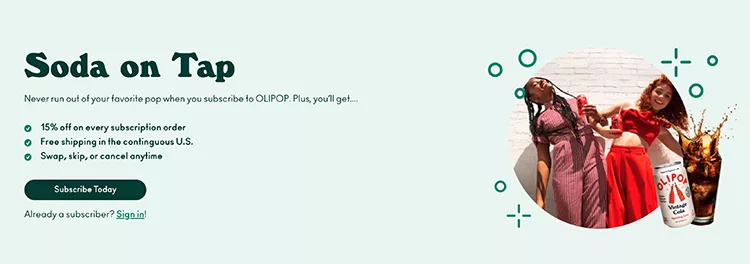
Mindvalley is another company that utilizes subscriptions to prime their business growth:
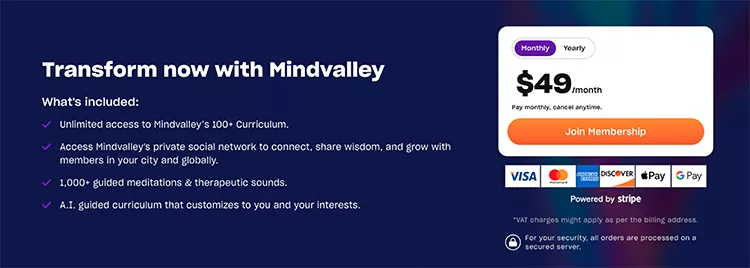
The key to subscriptions is giving people a reason to want to stay subscribed.
Implement Loyalty Programs
Once you have happy customers, the next strategy you can use to retain them (and get them to help drive even more new customers into your business) is a loyalty program.
Loyalty programs offer rewards, discounts, and other special incentives as a way to attract customers.
This helps retain customers by showing that you appreciate their business.
It also helps encourage repeat purchases and lets you create personalized offers.
Take a look at this loyalty program that offers travel credits for repeat business:
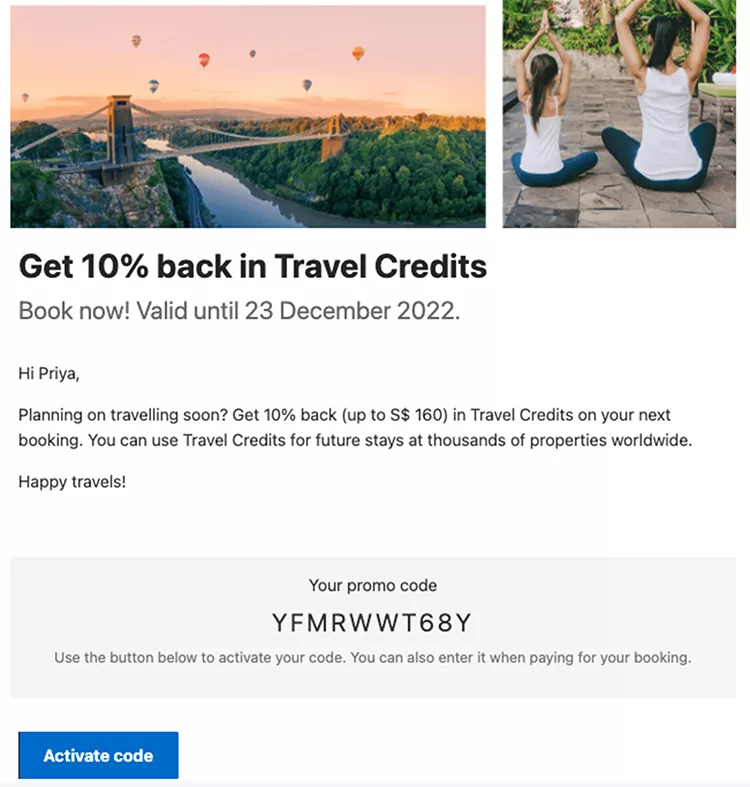
For your own program, you can use anything from a points system to tiered offers and even different subscription levels.
Starbucks uses a points system to drive repeat business:

Sephora combines a points system with a tiered structure:
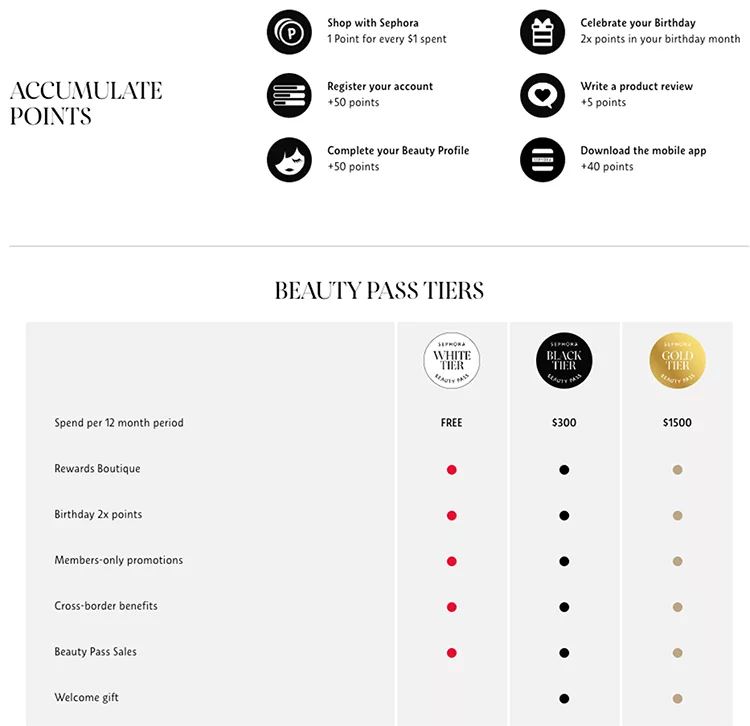
Share ‘How-to’ Content Around Your Product
You can also share How-To content around your products or services.
When customers fully understand how to leverage a product’s features, they’re more likely to be satisfied with the purchase they’ve made — and return for future purchases.
The delivery of this content can be done through your email list.
Check out how You-Need-A-Budget (YNAB) uses email to share new ways to use their product and help customers get maximum value from it:
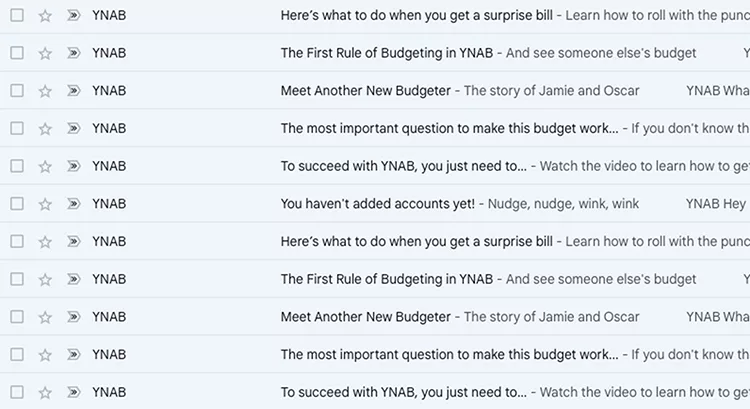
You don’t have to send these emails manually to everyone who has signed up.
The process can be fully automated with a tool like ClickFunnels.

The built-in automations can be triggered based on a customer’s behavior.
If they’ve purchased a subscription, you can stagger your email sequence out over the course of months to help retain their subscription even longer.
You can also deliver this how-to content to new customers to ensure you’re cultivating a great relationship and showing them exactly how to get the most out of your product or service.
To give them a try, click here to start your free 14-day ClickFunnels trial now.
Create a Community Around Your Customers
Building a community around your customers is another great way to retain them for the long-term.
There’s a few different ways you can do this.
Some of the most popular are Facebook groups, Reddit forums, and Slack channels.
This strategy works so well because it goes beyond simple transactions.
It allows you to engage with customers and directly builds trust while enabling peer-to-peer support
To show you what it looks like in real time, check out how Ahrefs has done it:
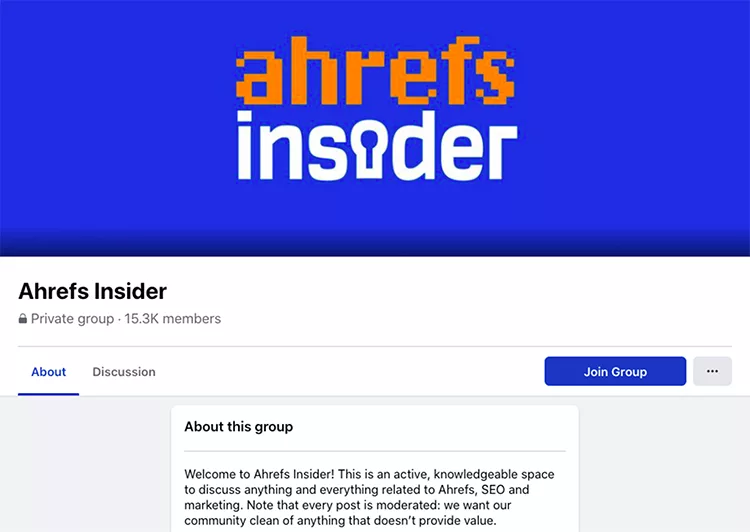
They have built a 15,300+ member Facebook group exclusively for their paying customers.
Inside the group, they post product updates, answer any product-related questions, and give tips on how to make the most out of the software.
Ask for Feedback and Act on it
Another great perk of having your own community for your customers is being able to directly ask for feedback — and then act on implementing it.
This can also be done through email marketing campaigns using ClickFunnels.

Saral (in the example above) consistently asks their customers for feedback on their experience.
Then they use that feedback to improve their products and delivery — which helps provide an even better experience for new customers.
How to Turn Loyal Customers Into Brand Advocates
The final stage in your customer acquisition plan is turning your loyal customers into long-term brand advocates for your products and services.
This word-of-mouth marketing is one of THE most cost-effective ways to grow your business.
You not only reduce the cost to acquire new customers but you also turn someone aware of your brand into a new customer very quickly.
To make this easier, there are a few strategies you can use.
Referral Programs
The first strategy is a customer referral program.
By incentivizing your existing customers to recommend your business, they’ll let friends, family, and new contacts know about your products or services.
As an example, you can offer them a discount on their next purchase for every successful referral.
This is how ClassPass does it:
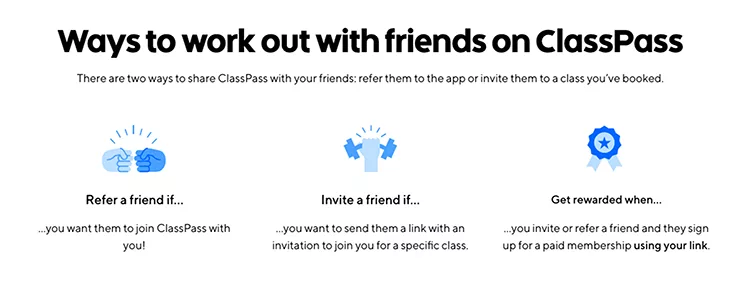
The Tonic also incentivizes their email subscribers to recommend their newsletter to people they may know who could benefit from it:
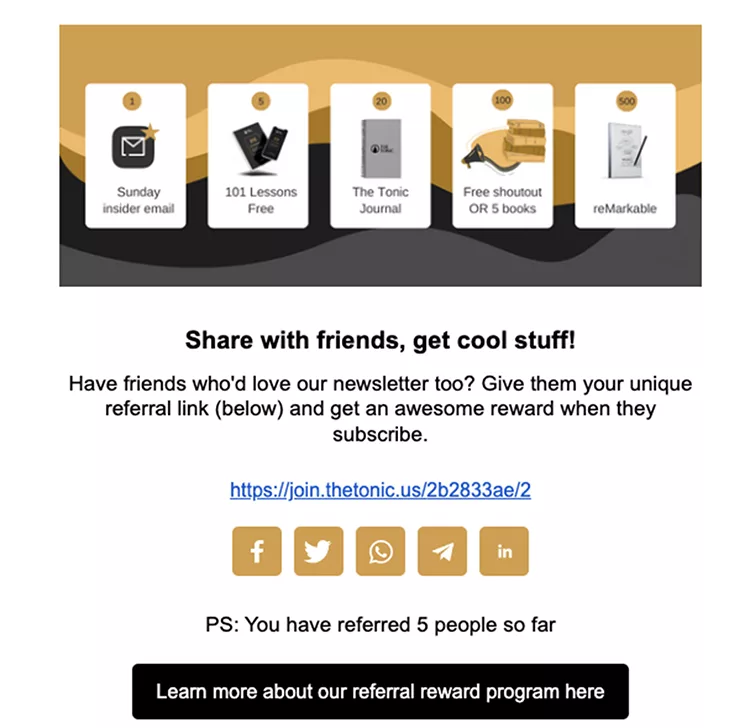
You can also implement affiliate referral programs.
In these programs, you can partner with individuals or other companies who may be willing to promote your products or services in exchange for a commission.
For example, paying bloggers a percentage on the sales that come from your referrals is a great way to start tapping into new audiences while gaining instant credibility within them.
Magic Spoon uses affiliate programs to grow their revenue:
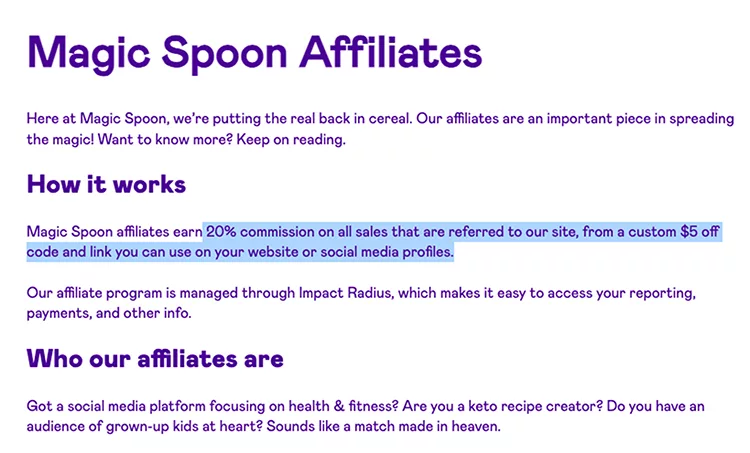
Each time a blogger or influencer recommends Magic Spoon to their audience and their audience uses a link with built-in tracking, the blogger or influencer gets paid and Magic Spoon acquires a new customer.
Encourage Social Sharing
You can also encourage (or even incentivize) social sharing.
One of the ways Notion does this is by sending swag to its top users and brand ambassadors and then encouraging them to share it across social media.
This helps build brand awareness while also bringing in new customers.
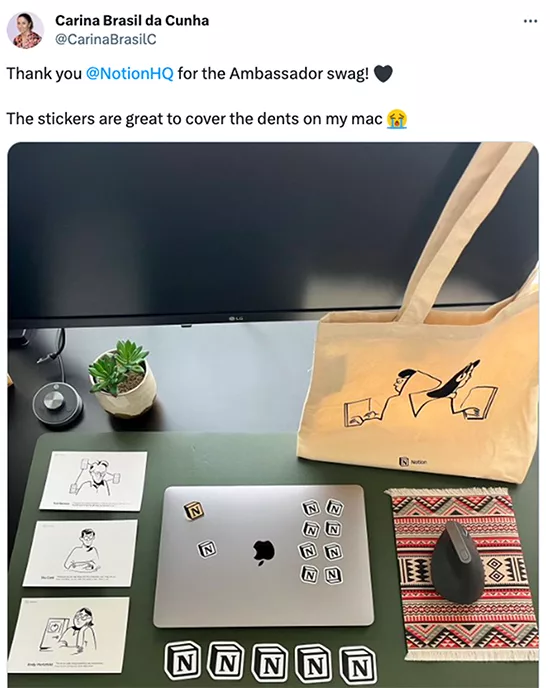
Offer Commission on Every Sale They Bring in
You can also offer your existing customers a commission on every sale they generate.
We use this strategy at ClickFunnels.
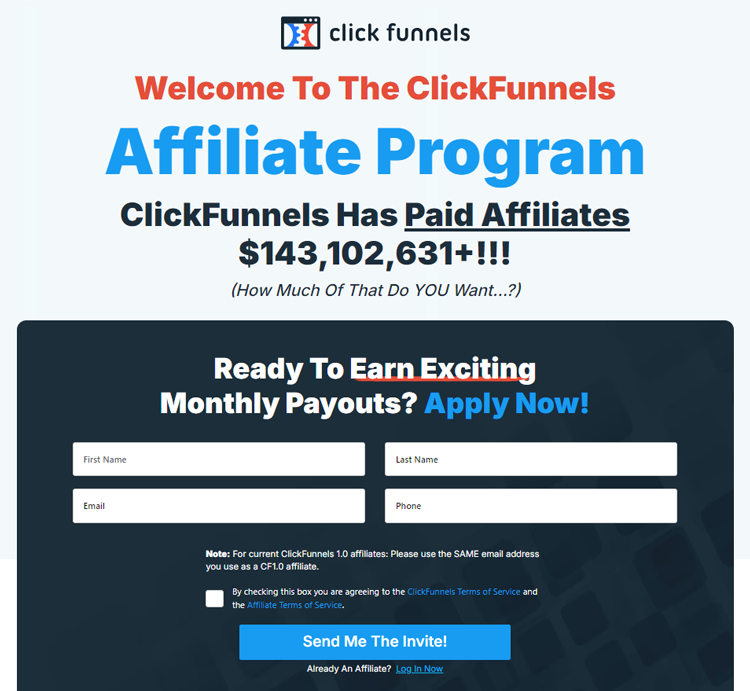
When one of our customers has a great experience with our software, they’re more likely to want to share their experience with other people in their network.
By sharing their experience along with their affiliate link, they can earn a recurring commission for each new customer they recommend.
To date, we have paid out over $143 million in affiliate commissions using this strategy.
In your own business, though, you’ll want to lay out detailed plans for how you will move customers through each of the stages we’ve broken down for you in this guide.
Then, when you’re ready to make ascending them through your customer acquisition plan as simple as possible, you can use a tool like ClickFunnels to help.
From your landing pages to your automations, moving customers through each stage in your customer acquisition plan is incredibly simple.
To see what we mean, click here now to start your free 14-day ClickFunnels trial.
